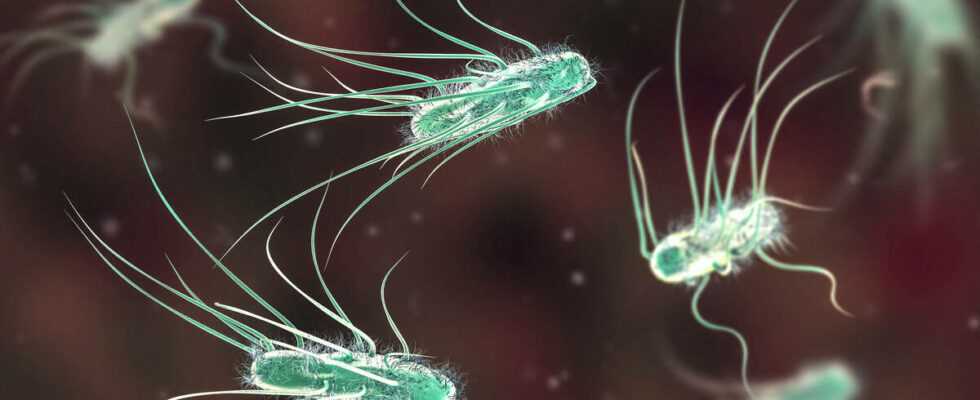After an investigation, the General Directorate of Health confirmed on Wednesday that frozen pizzas from Buitoni’s Fraîch’Up range had been contaminated by the bacterium Escherichia coli (E. coli). Since the end of February, France has experienced a resurgence of cases of haemolytic and uremic syndromes (HUS) linked to contamination with E. coli. In total, the latest count reported 41 serious cases, while 34 more are being assessed. This bacterium is not the main cause of food poisoning but can cause very serious cases, especially in children. Decryption.
An ubiquitous bacterium…
Escherichia coli, known as E. coli, actually refers to a whole family of bacteria, which are far from all dangerous to health. On the contrary, they are present in large numbers in the digestive system where some of them play a role in the proper functioning of the body.
But some varieties of E. coli can, conversely, cause poisoning. These are, most often, varieties “producing shigatoxins” as is the case in the recent wave of French contaminations. These toxins produce intoxications which, in the majority of cases, are not serious and mainly result in stomach aches and diarrhoea. They usually occur three or four days after ingestion.
…And most of the time benign
If these intoxications generally pass without damage in about ten days, they can in rare cases cause complications, above all in young children and the elderly.
This is most commonly referred to as “hemolytic uremic syndrome” (HUS). This usually results in acute kidney failure and serious blood problems, with the potential consequences of coma or death. “It is estimated that for up to 10% of patients, E. coli infection [productrice] shigatoxins can evolve into HUS, with a lethality rate of 3% to 5%”, summarizes the World Health Organization (WHO).
Treatments are still uncertain. Two synthetic antibodies, eculizumab and ravulizumab, are promising leads but need to be confirmed. In any event, antibiotics should not be given to a patient infected with E. coli bacteria that produce shigatoxins: they have no interest against them, and can even make the situation worse.
The mystery of baked pizzas
This form of E. coli “is transmitted to humans mainly through contaminated food, such as raw or undercooked ground meat and raw milk”explains the WHO.
But that’s not all : “A growing number of outbreaks are associated with the consumption of fruits and vegetables – sprouted seeds, spinach, lettuce, raw cabbage, salads”, she continues. One element is crucial: the temperature. If it reaches 70°C, the bacteria is destroyed, which means taking care to cook the food well.
The recent wave of cases, however, raises questions, especially among families of sick children. Health authorities have linked some of these contaminations to Buitoni brand frozen pizzas.
How could these dishes, cooked before being frozen, retain the incriminated bacteria within them? We don’t know yet. “We are exploring different hypotheses to find out how the contaminations could have occurred despite the cooking of the pizza.explained to France Inter the epidemiologist Gabrielle Jones, attached to the organization Public Health France. “It may be the manipulation of the pizza not yet cooked”, she advances.
An unprecedented epidemic in France
There are regular recalls of food products where dangerous E. coli bacteria have been identified, but serious or fatal cases remain relatively infrequent. With two deceased children and around forty confirmed cases for the moment, the current epidemic is already unprecedented in France.
Among foodborne infections, salmonellosis and listeriosis cause significantly more deaths. The first in particular is the cause of several hundred deaths each year in France.
At the level of all of Europe, the worst outbreak of E. coli infections dates back to 2011. In total, around fifty people died, especially in Germany and Sweden.
This epidemic also puts into perspective the image, often widespread, of an infection mainly linked to the poor cooking of meat. It has indeed been linked to contaminated germinated seeds.
